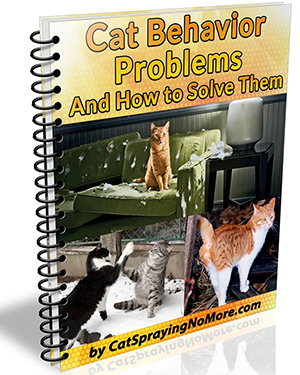Monthly Archives: August 2023
Cat Trees vs Scratching Poles: Which is Better for Your Pet
Cats are fascinating creatures that require a lot of attention and care. One crucial aspect of keeping your cat healthy is providing them with the right kind of exercise, which can help prevent obesity, boredom, and other behavioral issues. In this article, we will explore two popular options for exercising cats: cat trees vs scratching poles.

Introduction to Cat Trees vs Scratching Poles
Cat trees are tall structures made up of platforms, ramps, and perches that allow cats to climb, jump, and play. They come in various shapes and sizes, and some even have toys or balls attached to keep kitties entertained. On the other hand, scratching poles are vertical posts covered in sisal rope or carpet material that provide cats with an area to sharpen their claws and stretch their muscles. Both options offer unique benefits and drawbacks, so let’s take a closer look at each one.
The Importance of Exercise for Cats
Exercising your cat regularly helps maintain a healthy weight, improves joint flexibility, reduces stress levels, and prevents boredom-related behaviors such as excessive meowing or destructive scratching. A lack of physical activity can lead to obesity, which puts your pet at risk of developing diabetes, arthritis, and heart disease. Therefore, it’s essential to provide your feline friend with opportunities to move around and stay active.
How to Choose the Best Cat Tree or Scratching Pole
When selecting a cat tree or scratching pole, there are several factors to consider. Firstly, measure the size of your space and choose a structure that fits comfortably without taking up too much room. Secondly, think about your cat’s personality and preferences. Some cats love heights and enjoy lounging on elevated surfaces, while others prefer low-lying areas where they can hide or observe their surroundings. Thirdly, consider the materials used in construction. Look for sturdy structures made from durable materials like wood or metal, and avoid flimsy plastic products that could break easily. Finally, check for safety features such as non-skid bases or secure attachment points to prevent accidents.
Comparing the Benefits of Each Option
Let’s start by looking at the advantages of cat trees. These structures offer multiple levels and platforms for cats to climb and explore, promoting mental stimulation and physical activity. Many models also include toys or balls to engage kitties and encourage playtime. Additionally, cat trees can be placed near windows or doors, giving cats a bird’s eye view of their surroundings and reducing anxiety caused by separation. However, cat trees may not be ideal for households with small children who might accidentally knock over the structure or disturb sleeping pets.
On the other hand, scratching poles offer specific benefits as well. Unlike cat trees, these structures are typically more compact and easier to store, making them perfect for smaller spaces. They also provide cats with a designated area to scratch, helping prevent damage to furniture or walls. Moreover, scratching poles often feature different textures and angles, allowing cats to work out different parts of their bodies and improve overall agility. Nonetheless, some cats may find scratching poles limiting since they only offer one type of exercise.
Common Mistakes to Avoid When Buying a Cat Tree or Scratching Pole
One common mistake people make when purchasing cat trees or scratching poles is choosing poor quality products. Cheaply made items tend to fall apart quickly, putting both your pet and household decor at risk. Another error is buying structures that don’t match your cat’s needs or preferences. For example, if you own a senior cat with mobility problems, a high-level cat tree might not be suitable. Lastly, failing to supervise your cat during playtime can result in injuries or accidents. Always monitor your pet while using any new equipment and address any concerns promptly.
Conclusion: Which is Better for Your Pet?
Ultimately, whether you should opt for a cat tree or scratching pole depends on your individual circumstances. If you have limited space but still want to give your cat plenty of opportunity to climb and play, then a scratching pole might be best. However, if you prioritize mental stimulation and physical activity, then a cat tree would likely be better suited for your furry companion. Remember to always consult with your veterinarian before introducing any new equipment into your home and ensure that all products meet industry standards for safety and quality.
5 Ways to Keep Your Kitty Entertained with the Best Cat Toys on the Market
As a cat owner, you know how important it is to keep your feline friend entertained and engaged. Cats need mental stimulation and physical exercise just as much as we do, which is why investing in high-quality cat toys can make all the difference. In this post, we’ll explore five ways to keep your kitty amused with some of the best cat toys available today.
Types of Cat Toys and Why They’re Important
There are many different types of cat toys out there, each designed to provide your furry companion with something unique and engaging. Some popular options include:
1. Interactive toys like laser pointers or feather wands that allow you to play with your cat remotely. These toys help develop your cat’s hunting instincts while also providing valuable bonding time between pet and parent.
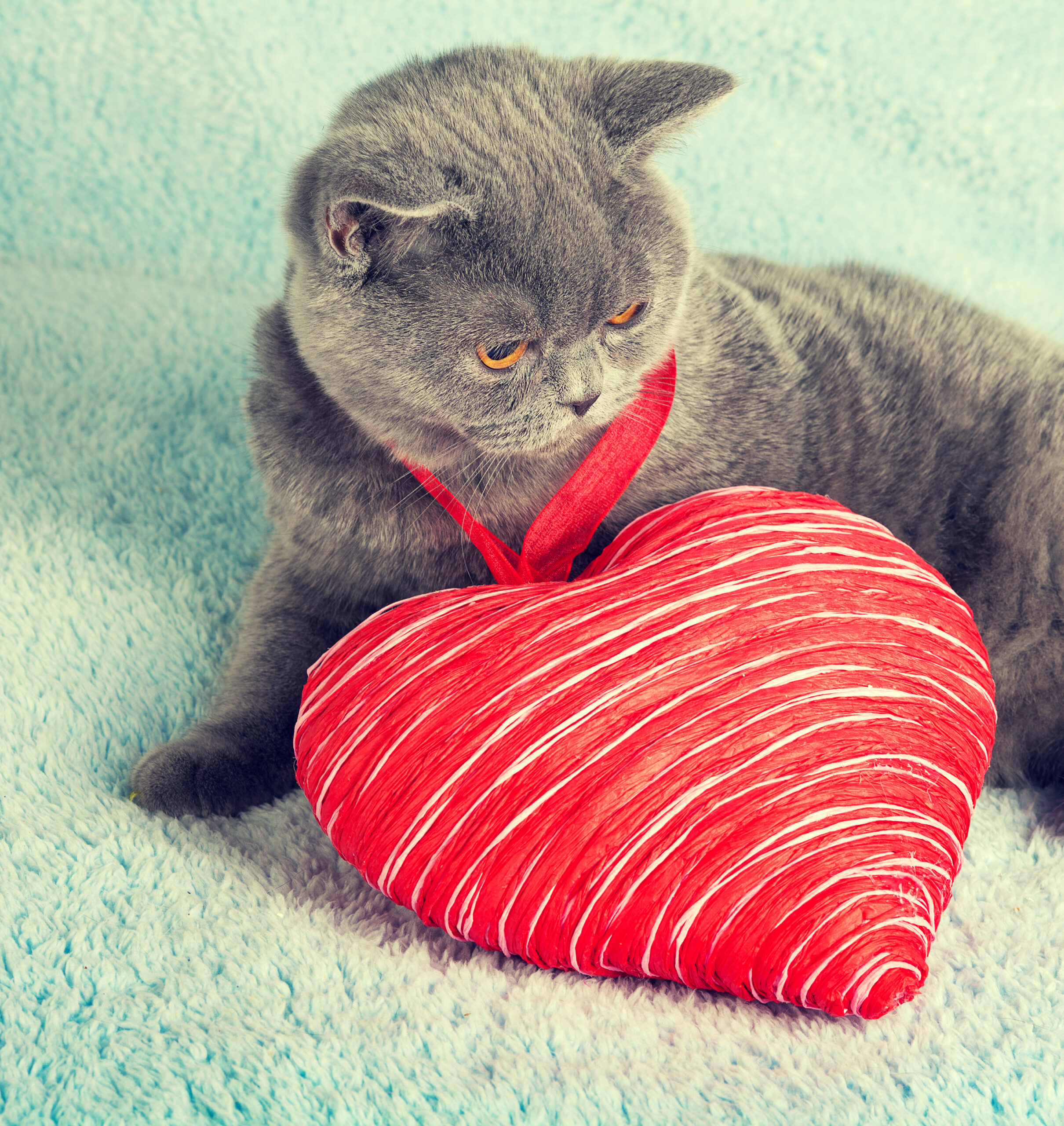
2. Puzzle toys that challenge your cat’s problem-solving skills by hiding treats or small toys inside them. This type of toy helps prevent boredom and encourages healthy curiosity.
3. Scratching posts and poles that give your cat an appropriate place to sharpen their claws and express their natural behavior.
4. Soft toys made from fabric or plush materials that offer comfort and security for cats who enjoy snuggling up with something soft.
The Best Cat Toys on the Market Today
With so many options available, choosing the right cat toys can be overwhelming. Here are some of our top picks for the best cat toys currently on the market:
1. The Petstages Tower of Tracks – A multi-level scratching post that includes tracks, tunnels, and perches for endless hours of entertainment.
2. The Da Bird Feather Toy – An interactive wand toy that mimics the movement of prey, perfect for getting your cat moving and engaged.
3. The Kong Classic Cat Toy – A durable rubber toy that provides a satisfying chew experience while helping to clean teeth and gums.
4. The Furbo Dog Camera: This isn’t technically a “toy,” but it’s a great way to check in on your cat when you’re not at home and even toss them treats remotely!
How to Choose the Right Toy for Your Kitty
Choosing the right cat toy depends largely on your individual cat’s preferences and personality traits. Consider factors such as age, activity level, and interests when selecting new toys. For example, if your cat loves chasing after things, a laser pointer might be a good choice. If they prefer solo playtime, a puzzle toy may be more suitable. It’s also essential to choose toys that are safe and non-toxic, especially if your cat likes to chew on their playthings.
Keeping Your Kitty Entertained with Variety
One of the keys to keeping your cat happy and engaged is to provide variety in their toys. Offer a mix of different types of toys, including both interactive and independent options. Rotate toys regularly to keep your cat interested, and consider incorporating new toys into their routine every few months.
Litter Box Essentials
In addition to providing plenty of fun and engaging toys, it’s crucial to ensure that your cat has access to proper litter box essentials. Make sure to use a high-quality brand of clumping litter, and change it frequently to maintain hygiene. Also, be mindful of the location of the litter box; ideally, it should be placed in a quiet area away from noise and traffic.
Feeding Your Feline: What You Need to Know
Finally, let’s talk about feeding your feline. As a responsible pet owner, it’s essential to provide your cat with a balanced diet that meets their nutritional needs. Consult with your veterinarian to determine what type of food is best suited for your cat based on their age, breed, and overall health status. Remember to always provide fresh water alongside meals, and avoid giving your cat table scraps or other human foods that could cause digestive issues.
Cat Trees, Scratching Poles, and Other Accessories
Lastly, don’t forget about the importance of providing your cat with additional accessories like cat trees, scratching poles, and climbing structures. These items serve multiple purposes, including offering a space for your cat to stretch and climb, providing a comfortable resting spot, and promoting healthy grooming habits through regular scratching.
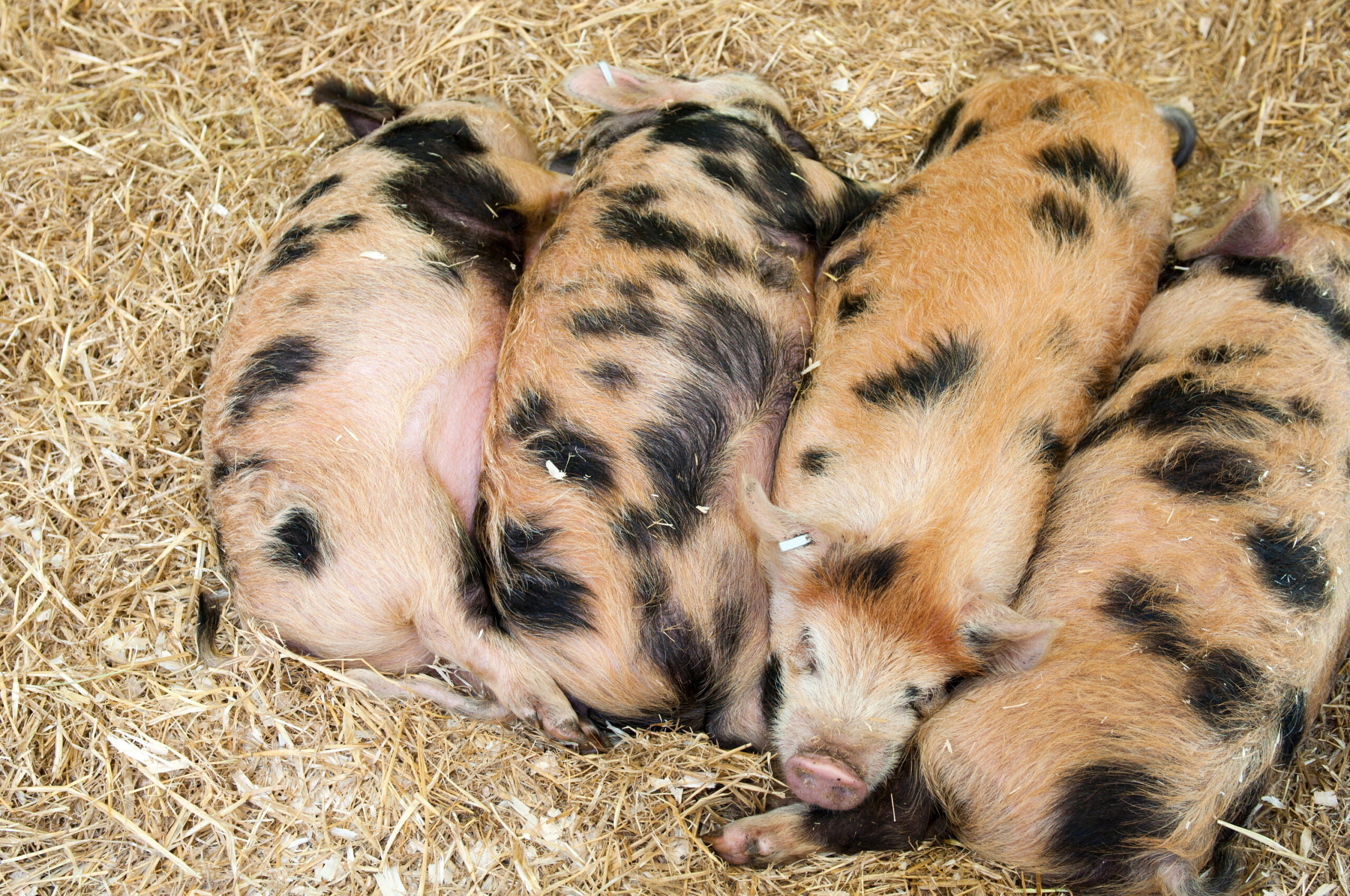
Conclusion
In conclusion, keeping your kitty entertained and engaged requires a combination of high-quality cat toys, appropriate litter box essentials, and accessories like cat trees and scratching poles. By following these tips and ensuring that your cat has everything they need to thrive, you can promote a long and happy life together filled with love and laughter.
Cat Trees, Scratching Poles, and Other Ways to Give Your Kitty Some Love
Introduction:
If you’re a cat owner, then you know how important it is to provide your feline friend with the best possible care. From food and water to playtime and exercise, there are many ways that we can show our cats some love. In this blog post, we will explore five different topics related to caring for your cat, including cat trees, scratching poles, litter boxes, fun cat toys, and nutritious meals. Let’s get started!
The Importance of a Litter Box for Your Cat’s Health:
One of the most essential things you need to provide for your cat is a clean and comfortable litter box. This should be placed in a quiet area where your kitty won’t feel disturbed while doing their business. Make sure to scoop out any waste daily and replace the litter entirely every week or so. It’s also crucial to choose the right type of litter for your cat’s needs; clumping litter is often preferred because it makes cleanup easier. By providing your cat with a proper litter box, you help prevent health issues like urinary tract infections and other problems associated with poor hygiene.
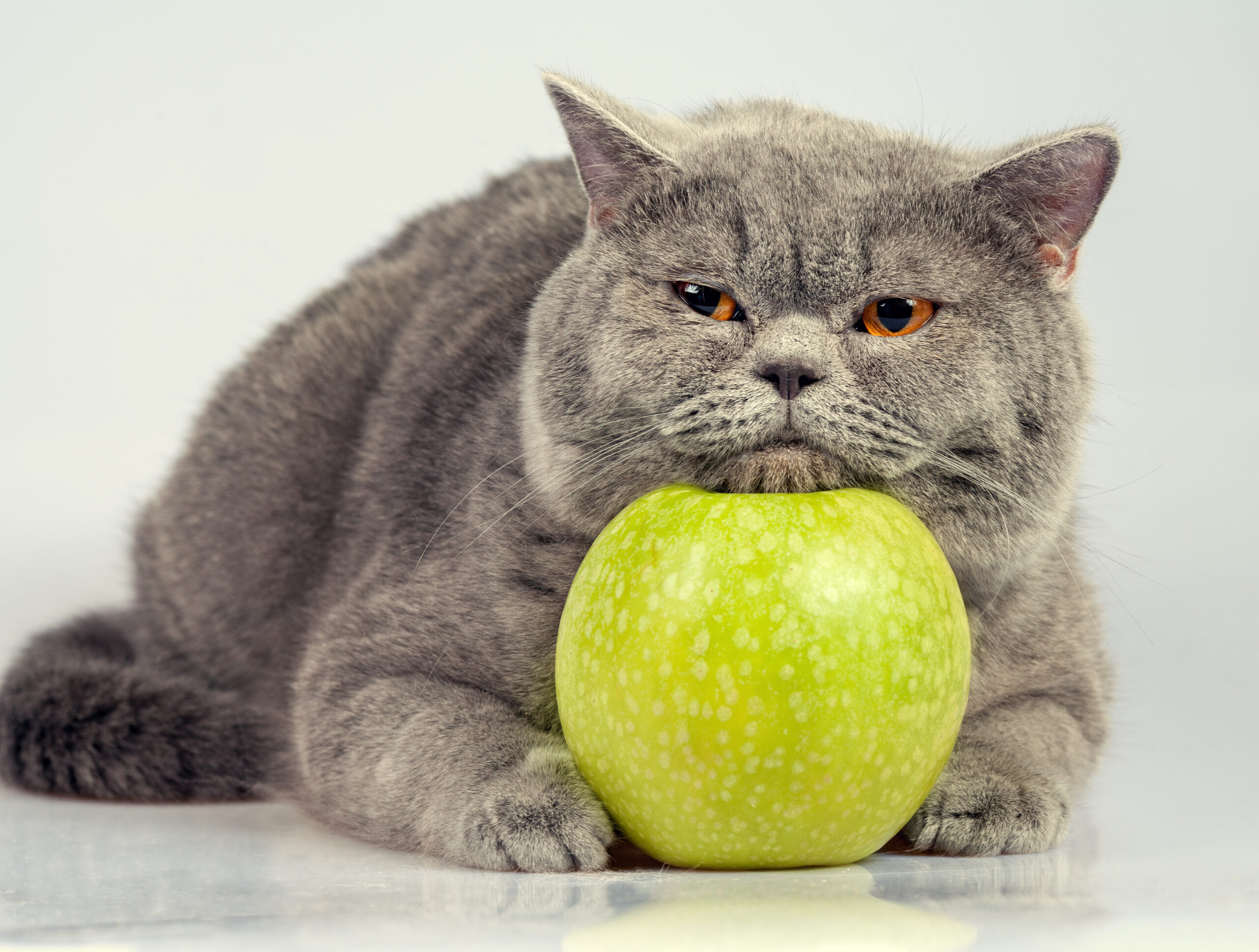
5 Fun Cat Toys That Will Keep Your Feline Entertained:
Cats need mental stimulation just as much as they require physical activity. Here are five types of toys that can keep your cat entertained for hours on end:
1. Laser pointers – These small gadgets allow you to direct a beam of light around the room, which your cat will chase after. Just make sure not to shine the laser directly into your pet’s eyes.
2. Feather wands – A stick with feathers attached at one end provides an interactive way to engage your cat’s hunting instincts. You can move the wand around to simulate prey movement, and your cat will pounce and swat at it.
3. Interactive puzzle toys – These toys have hidden compartments that hold treats or toys inside, requiring your cat to solve a puzzle to access them. They promote problem-solving skills and encourage mental stimulation.
4. Balls with bells – Many cats enjoy batting around balls with bells inside, making for a noisy but entertaining game.
5. Cardboard boxes – Believe it or not, simple cardboard boxes can provide hours of amusement for cats. Cut holes in the sides and top of the box to create a cozy hiding spot or add tunnels made from paper tubes for extra excitement.
A Guide to Choosing the Best Cat Supplies for Your Furry Friend:
As a responsible cat owner, you want to ensure that you’re providing your furry companion with everything they need to thrive. When choosing supplies for your cat, consider factors such as their age, breed, and personality. For example, older cats may benefit from a soft bed or ramps to assist with mobility issues. Breeds with long hair may require regular grooming to avoid matting and skin irritation. And if your cat tends to chew on things, investing in durable toys can save you money in the long run. Additionally, make sure to purchase high-quality food and water bowls, as well as a sturdy litter box. With these essentials covered, your cat will be set up for success.
Feeding Your Cat: What You Need to Know About Nutrition and Portion Control:
Providing your cat with a balanced diet is critical for their overall health and wellbeing. The first step is selecting a reputable brand of cat food that meets all necessary nutrient requirements. Be mindful of portion sizes, especially if your cat has a history of obesity or weight management issues. A general rule of thumb is to feed your cat twice per day, using measuring cups to ensure that you’re not overfeeding. It’s also okay to offer occasional treats, but limit them to no more than 10% of your cat’s total caloric intake. Finally, always provide fresh water for your cat, either through a water dish or a drinking fountain.
Why Scratching Poles Are Essential for Your Cat’s Well-Being:
Scratching is a natural behavior for cats, allowing them to mark their territory and maintain healthy claws. However, without a designated scratching surface, your cat may resort to damaging furniture or walls instead. Providing a scratching pole or post gives your cat an appropriate place to fulfill this innate desire. Look for ones made from sturdy materials like sisal rope or wood, and position them in areas where your cat spends time. Regularly inspect the scratching surface for wear and tear, replacing it when needed. By offering a suitable alternative, you can protect both your home and your cat’s wellness.
When is it Too Late to Neuter a Cat?
Neutering, also known as castration in males and spaying in females, is a common surgical procedure performed on cats to prevent them from reproducing. It offers numerous benefits, including controlling the pet population, reducing certain health risks, and managing behavioral issues. However, cat owners often wonder when is the right time to neuter their feline companions and if there is a point when it becomes too late. This article aims to address this important question.
Early Neutering
Early neutering refers to performing the procedure at a very young age, typically between 8 and 16 weeks. This approach has become increasingly popular due to its numerous advantages, including:
a. Population Control: Early neutering helps prevent unwanted litters and contributes to controlling the overpopulation of cats.
b. Behavior Modification: Neutering at a young age can mitigate undesirable behaviors, such as urine spraying and aggression, in male cats.
c. Health Benefits: It may reduce the risk of certain health issues, like testicular cancer in males and uterine infections in females.
Adult Neutering
Neutering can be safely performed on adult cats as well, and there is no set age at which it becomes “too late.” However, there are some considerations to keep in mind:
a. Behavior: Neutering adult cats may not always eliminate ingrained behaviors like spraying or aggression, although it can still help reduce them.
b. Health Benefits: Neutering can still provide health benefits to adult cats, such as reducing the risk of certain reproductive-related diseases.
c. Anesthesia and Recovery: Older cats may require more careful monitoring during anesthesia and a longer recovery period.
Senior Cats
Even senior cats can be neutered if there is a medical need or behavioral issue to address. However, the decision should be made in consultation with a veterinarian, taking into account the cat’s overall health and the specific reasons for neutering.
Special Cases
There are some situations where neutering may be recommended regardless of a cat’s age:
a. Medical Conditions: Neutering may be advised if a cat develops medical conditions related to the reproductive organs.
b. Unmanageable Behavior: In cases of extreme aggression, spraying, or other behavior issues, neutering may be considered as part of a behavior modification plan.
Consultation with a Veterinarian
The decision of when to neuter a cat should always be made in consultation with a qualified veterinarian. They can assess the cat’s individual health, behavior, and specific circumstances to determine the most appropriate timing for the procedure.
More information from a vet click here
Conclusion
In conclusion, there is no specific age at which it becomes “too late” to neuter a cat. The decision should be based on individual factors such as the cat’s age, health, behavior, and specific circumstances. Neutering can offer various benefits throughout a cat’s life, from preventing unwanted litters to reducing certain health risks. Therefore, it is essential for cat owners to work closely with their veterinarians to make informed decisions regarding the timing of neutering for their feline companions.
Understanding Sudden House Soiling in Cats: Causes and Solutions
Few things are more frustrating for cat owners than discovering that their beloved feline friend is suddenly peeing in the house. Cats are generally fastidious creatures, and using the litter box is second nature to them. So, when a well-trained cat starts urinating indoors, it’s essential to explore the reasons behind this sudden change in behavior. In this article, we will delve into the various factors that might lead to your cat peeing in the house all of a sudden and provide guidance on how to address these issues.
Watch what Jackson Galaxy says about this problem.
- Medical Issues
One of the most critical first steps when dealing with sudden house soiling in cats is to rule out any underlying medical problems. Urinary tract infections, bladder stones, diabetes, and kidney disease can cause discomfort and increased urination. When a cat associates the litter box with pain, they may seek out other places to relieve themselves. If your cat is peeing outside the litter box unexpectedly, consult your veterinarian to ensure there are no underlying health issues.
- Litter Box Problems
Cats are meticulous about their bathroom habits, and any issues with the litter box can lead to house soiling. Consider the following litter box-related factors:
- Cleanliness: Cats prefer clean litter boxes. If the box is dirty or hasn’t been scooped regularly, your cat might avoid it.
- Litter Type: Cats can be picky about the type of litter they use. If you’ve recently changed the litter brand or type, your cat might not like the new texture or scent.
- Location: The location of the litter box matters. It should be in a quiet, easily accessible area, away from the cat’s food and water bowls.
- Size and Type: Some cats prefer larger litter boxes, while others may favor covered ones. Experiment with different sizes and types to see what your cat prefers.
- Stress and Anxiety
Cats are highly sensitive to changes in their environment and routine. Stressors such as moving to a new home, introducing a new pet, or changes in the household can trigger sudden house soiling. Cats may urinate inappropriately as a way to mark their territory or as a response to the stress they are experiencing. Reducing stressors and providing a calm, consistent environment can help alleviate this behavior.
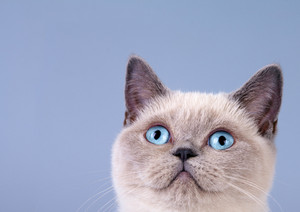
- Marking Behavior
Unspayed or unneutered cats are more likely to engage in marking behavior. Marking involves spraying urine to establish territory or communicate with other cats. If your cat is not fixed, consider getting them spayed or neutered to reduce this behavior. Even after the procedure, it may take some time for the marking behavior to subside.
- Social or Behavioral Issues
Cats can develop behavioral problems that manifest as house soiling. These issues can include aggression, fear, or conflicts with other pets in the household. Addressing the underlying behavioral problems through training and, if necessary, consulting with a professional animal behaviorist can help resolve these issues.
- Changes in Routine
Cats thrive on routine, and even minor changes can disrupt their bathroom habits. If your cat has started peeing in the house after a significant change in your schedule, such as a new job or travel, they may be reacting to the disruption. Gradually reintroduce a routine that includes regular feeding and playtime to help them adjust.
- Aging and Health
As cats age, they may develop physical or cognitive issues that can contribute to house soiling. Older cats might have arthritis or other ailments that make it difficult for them to access the litter box comfortably. Provide them with easy-to-reach litter boxes, softer bedding, and regular veterinary care to manage age-related changes.
Conclusion
Sudden house soiling in cats can be a challenging issue to tackle, but understanding the potential causes is the first step toward finding a solution. Whether it’s a medical problem, litter box issues, stress and anxiety, marking behavior, social conflicts, changes in routine, or age-related changes, addressing the underlying cause is crucial. Consult with your veterinarian to rule out medical issues, and then work on creating a comfortable, stress-free environment for your feline friend. With patience, consistency, and sometimes professional guidance, you can help your cat return to using the litter box as nature intended.
Learn more about how to help them and going back into the litter box check out this link
Understanding the Behavior: Why Is Your Male Cat Peeing Everywhere and Meowing Excessively?
As a cat owner, it’s both heartwarming and concerning when your feline companion exhibits unusual behaviors like peeing everywhere and meowing excessively. If you have a male cat that is displaying such behaviors, it’s essential to delve into the underlying causes to ensure his health and well-being. In this article, we’ll explore some of the common reasons behind these behaviors and offer insights into how you can address them.
- Territorial Marking
Male cats are prone to territorial marking, which involves spraying urine in various locations. This instinctual behavior is more prevalent in intact males, as it’s a way for them to establish their territory and communicate with other cats. Neutering your cat can significantly reduce this behavior, as it helps to curb their hormone-driven territorial tendencies. If your cat is already neutered and still marking, consulting a veterinarian is recommended to rule out any medical issues.
- Urinary Tract Issues
Frequent urination or urinating outside the litter box could be an indicator of urinary tract problems. Conditions such as urinary tract infections, bladder stones, or feline lower urinary tract disease (FLUTD) can cause discomfort and pain, leading to avoidance of the litter box. If you notice your cat straining while urinating, passing blood in the urine, or showing signs of pain, a prompt visit to the vet is essential.
- Stress and Anxiety
Cats are sensitive creatures that can experience stress and anxiety due to changes in their environment or routine. Events like moving to a new home, introducing a new pet, or changes in household dynamics can trigger excessive meowing and inappropriate urination. Providing a safe and comfortable space, using pheromone diffusers, and maintaining a consistent routine can help alleviate stress-related behaviors.
- Attention-Seeking Behavior
Cats are skilled at communicating their needs, and excessive meowing can be your cat’s way of seeking attention. If your cat associates meowing with getting your attention, he may continue the behavior to get what he wants, whether it’s food, playtime, or companionship. Establishing a regular play and interaction routine can help reduce attention-seeking meowing.
- Medical Conditions
Excessive meowing can sometimes indicate an underlying medical issue. Hyperthyroidism, cognitive dysfunction syndrome (similar to dementia in humans), or pain due to arthritis are examples of conditions that can cause changes in behavior, including increased vocalization. Regular veterinary check-ups are crucial to catch and address these conditions early.
- Hunger or Dietary Issues
Cats are creatures of habit, and they thrive on routine. If your cat is meowing excessively, he might be trying to communicate his hunger or dissatisfaction with his current diet. Ensuring your cat’s feeding schedule is consistent and providing high-quality nutrition can help alleviate this issue.
- Age-Related Changes
As cats age, their behavior and needs can change. Older cats might meow more due to sensory changes, cognitive decline, or discomfort associated with aging. Providing soft bedding, easy access to food and water, and regular veterinary care can support your senior cat’s well-being.
Conclusion
Understanding the reasons behind your male cat’s excessive meowing and inappropriate urination is crucial for his health and happiness. By considering factors such as territorial instincts, health issues, stress, attention-seeking, and age-related changes, you can tailor your approach to addressing these behaviors. Remember that each cat is unique, so a combination of patience, observation, and professional guidance from a veterinarian will help you navigate these challenges effectively.
Learn how to stop your cat male or female to peeing out side of the little box, check out this link
Socializing Your Cat: The Benefits of a Well-Adjusted Feline Friend
Introduction to Socializing Your Cat
Having a well-socialized cat can make all the difference in your household. A cat that is comfortable around people and other animals will be more confident, outgoing, and less prone to anxiety or aggression. However, socialization doesn’t happen overnight – it takes time and effort to help your feline friend become accustomed to new situations and stimuli. In this blog post, we’ll explore some tips for successfully socializing your cat and reaping the benefits of having a well-adjusted feline companion.
The Importance of Playtime and Exercise for a Well-Adjusted Feline Friend
One key component of socializing your cat is providing plenty of opportunities for playtime and exercise. Cats need mental and physical stimulation to stay healthy and happy, so investing in toys, scratchers, and climbing structures can go a long way towards helping them develop their natural instincts and behaviors. Additionally, regular play sessions with you or another family member can strengthen your bond and build trust between you and your cat.
Understanding Your Cat’s Body Language and Communication Needs
Another important aspect of socializing your cat is understanding their body language and communication needs. For example, cats often use tail movements, ear positions, and vocalizations to express themselves. By learning how to interpret these signals, you can better understand what your cat is trying to communicate and respond appropriately. This can also help prevent misunderstandings or conflicts with other pets or humans in your home.
Tips for Successful Cat Training and Behavior Modification
Finally, successful cat training and behavior modification requires consistency, patience, and positive reinforcement. Rather than using punishment or force, focus on rewarding good behavior with treats, praise, or attention. It may take time to see results, but with consistent effort, you can teach your cat new skills and modify unwanted behaviors.
Conclusion
In conclusion, socializing your cat can have numerous benefits, including improved confidence, reduced stress and anxiety, and stronger bonds with human companions. By providing ample opportunity for playtime and exercise, understanding your cat’s body language and communication needs, and utilizing positive reinforcement techniques for training and behavior modification, you can set your cat up for success and enjoy many years of happiness together.
How to Choose the Perfect Cat Tree for Your Climbing Kitten
Are you ready to find the perfect cat tree for your climbing kitten? Choosing a cat tree can be an overwhelming task, but with these tips and tricks, you’ll be able to select the best one for your furry friend.
Introduction to Choosing the Perfect Cat Tree
A cat tree is more than just a piece of furniture; it’s a place where your cat can exercise, play, and relax. When choosing a cat tree, there are several factors to consider, including size, stability, materials, and accessories. It’s important to choose a cat tree that will provide your cat with hours of entertainment while also keeping them safe and secure.
The Importance of a Sturdy and Safe Cat Tree
Cats love to climb, jump, and scratch, which means that their cat tree needs to be sturdy enough to handle all of this activity. A flimsy or unstable cat tree can pose a serious risk to your cat’s safety, so make sure to choose one that is made from high-quality materials and designed to withstand rough play.
Considering Your Cat’s Age, Size, and Activity Level
When selecting a cat tree, it’s essential to take into account your cat’s age, size, and activity level. For example, if you have a young, active cat, you may want to opt for a larger cat tree with multiple levels and plenty of places to climb and explore. On the other hand, if you have an older cat who prefers to lounge around, a smaller cat tree with comfortable resting spots may be more suitable.
How to Select the Best Material for Your Cat Tree
There are many different types of materials used in cat trees, including carpet, sisal rope, and wood. Each material has its own unique benefits and drawbacks, so it’s important to do some research before making a decision. Carpeted cat trees are soft on your cat’s paws and provide insulation against cold floors, while sisal rope is durable and provides a natural surface for clawing. Wooden cat trees are classic and elegant, but they require regular maintenance to prevent damage from chewing and scratching.
Accessorizing Your Cat Tree with Toys and Scratchers
Once you’ve selected the perfect cat tree, don’t forget to add some fun accessories! You can attach toys like dangling mice or feather wands to keep your cat entertained, or include scratchers to help them maintain healthy nail growth. Just remember not to clutter up the space too much, as cats need room to move around freely.
In conclusion, finding the right cat tree requires careful consideration of various factors such as your cat’s age, size, activity level, and personal preferences. By following these guidelines, you’re bound to find the perfect cat tree that will bring joy and excitement to both you and your feline companion.
5 Essential Cat Supplies Every Owner Should Have
Cats are fascinating creatures that bring joy and love to their owners’ lives. As a responsible cat owner, it is essential to provide your feline friend with the necessary supplies to ensure their health and well-being. In this blog post, we will discuss five essential cat supplies every owner should have.
Introduction
Litter Box – Why it’s Important and What to Look For
One of the most important cat supplies you need to have is a litter box. A good quality litter box provides your cat with a clean and comfortable place to do their business. When choosing a litter box, consider the size of your cat and how often they use the litter box. You want to make sure the box is large enough for them to turn around in comfortably. Additionally, look for a litter box made from durable materials such as plastic or metal. This ensures that the box will last longer and require less maintenance.
Cat Toys – The Best Types for Your Feline Friend
Another crucial cat supply is toys. Cats need mental stimulation and physical exercise to stay happy and healthy. There are many types of cat toys available on the market today, including laser pointers, feather wands, and scratching posts. Interactive toys like puzzle feeders and automatic ball launchers can also help keep your cat entertained while you’re away. Make sure to choose toys that are appropriate for your cat’s age and activity level.
Cat Supplies – Other Essential Items You May Not Have Thought Of
In addition to a litter box and toys, there are other essential items you may not have thought of. These include grooming tools like brushes and combs, which help keep your cat’s fur soft and shiny. Nail clippers are another vital item, especially if your cat doesn’t wear down their nails naturally. Finally, a first aid kit containing essentials like bandages, antiseptic wipes, and tweezers can come in handy in case of emergencies.
Cat Food – Choosing the Right Nutrition for Your Cat
A high-quality cat food is an essential part of your cat’s diet. It’s essential to choose a brand that meets all of your cat’s nutritional needs. Look for cat food that contains protein sources like chicken, fish, or beef, along with vitamins and minerals. If your cat has any specific dietary requirements, consult with your veterinarian before making changes to their diet.
Conclusion
As a responsible cat owner, providing your feline friend with the necessary supplies is critical to their overall health and happiness. By investing in a high-quality litter box, toys, grooming tools, first aid kit, and cat food, you can rest assured knowing that your cat is receiving everything they need to thrive. Remember, cats are unique individuals with different needs and preferences, so take the time to observe your cat and adjust their supplies accordingly.
Feeding Your Feline: The Ultimate Guide to Choosing the Right Cat Food
Choosing the right cat food can be a daunting task, especially with so many options available on the market. However, it’s essential to provide your feline companion with a balanced and nutritious diet that meets their specific needs. In this guide, we will explore everything you need to know about choosing the perfect cat food for your furry friend.
Introduction to Choosing the Right Cat Food
Cats have unique nutritional requirements that differ from dogs or humans. They are obligate carnivores, which means they require a diet high in protein and fat derived from animal sources. Unlike dogs, cats cannot digest carbohydrates efficiently, making them more susceptible to obesity and diabetes if fed a diet too rich in grains. It’s crucial to choose a cat food that provides complete and balanced nutrition tailored to your cat’s age, lifestyle, and health status.
Understanding Your Cat’s Nutritional Needs
When selecting a cat food, consider your cat’s life stage, activity level, and any medical conditions they may have. Kittens, pregnant females, and seniors all have different nutritional needs than adult cats. Active cats require more calories and protein to fuel their energy levels while indoor cats may benefit from lower-calorie options to prevent weight gain. Certain medical conditions such as kidney disease or urinary tract issues may also require specialized diets.
Common Ingredients in Cat Food and Their Benefits
Meat is the primary ingredient in most quality cat foods, providing the necessary protein and amino acids for your cat’s growth and maintenance. Look for named meats like chicken, turkey, or fish rather than generic meat byproducts. Other important ingredients include vitamins and minerals, fiber, and omega-3 fatty acids. Vitamins and minerals help support immune function and overall health, while fiber promotes gut health and helps regulate bowel movements. Omega-3 fatty acids improve skin and coat condition and reduce inflammation throughout the body.
How to Read a Cat Food Label
Reading a cat food label can be overwhelming, but understanding what to look for can make it easier. First, check the list of ingredients to ensure that meat is listed as the first ingredient followed by other whole foods like vegetables and fruits. Avoid products with excessive amounts of fillers like corn, wheat, or soy, which offer little nutritional value to cats. Also, pay attention to the guaranteed analysis section, which lists the minimum percentages of crude protein and fat provided by the food. Ideally, you want a product that offers at least 25% protein and 10% fat. Finally, check the feeding guidelines on the package to ensure that you’re offering the appropriate portion sizes based on your cat’s weight and activity level.
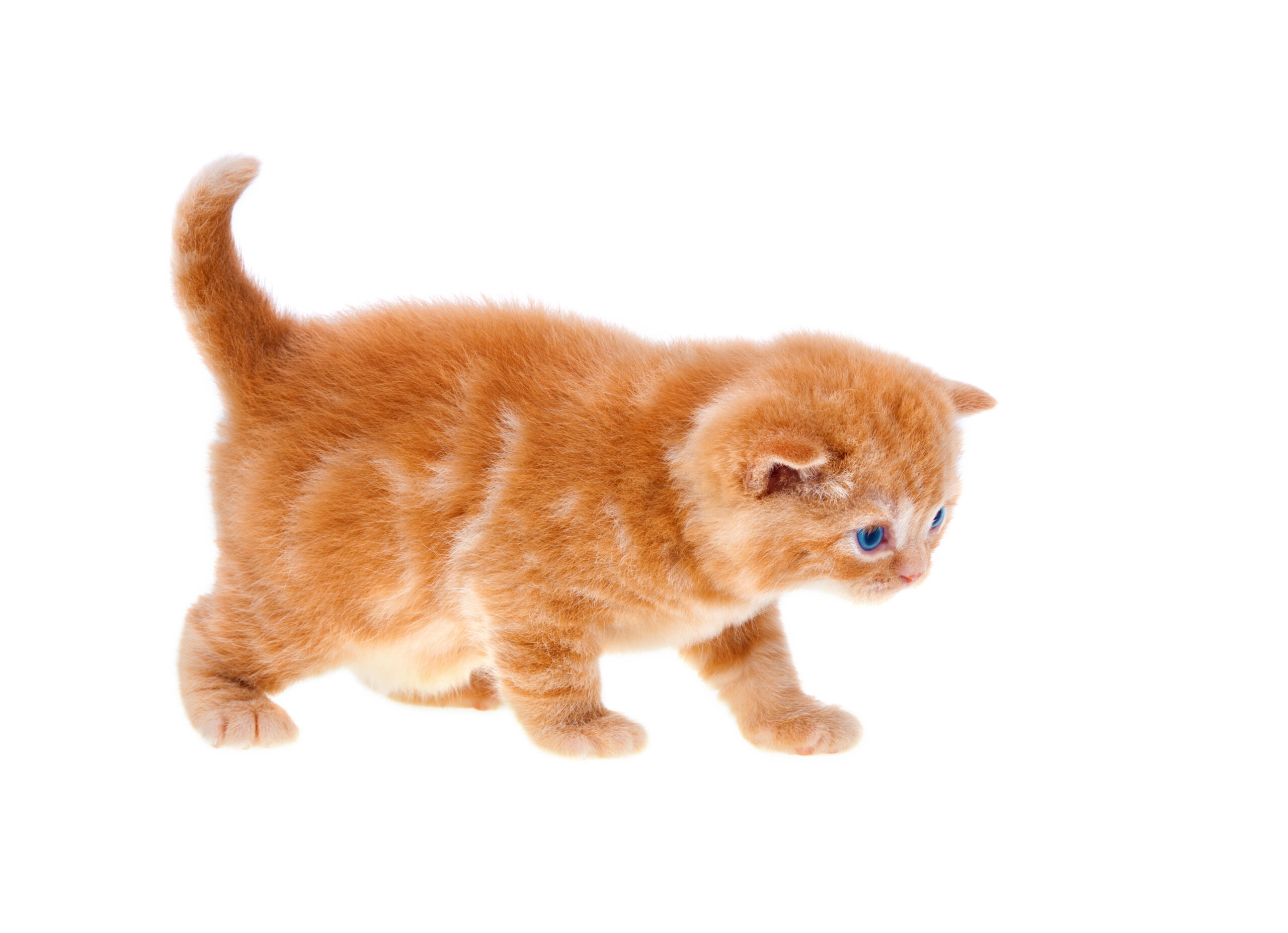
In conclusion, choosing the right cat food requires careful consideration of your cat’s individual needs and preferences. By following these tips and doing your research, you can find a high-quality product that provides complete and balanced nutrition for your beloved feline companion.



